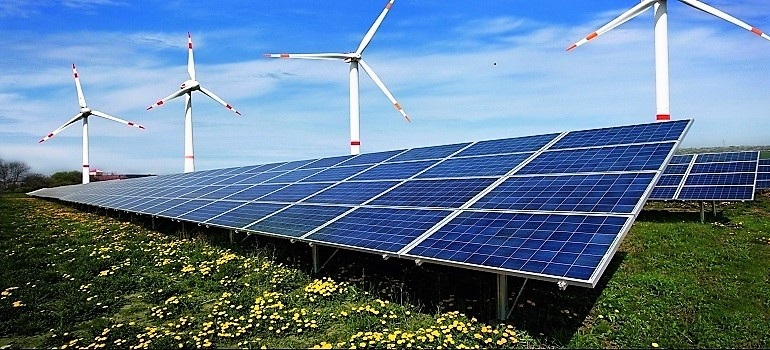
According to a study by Energy Watch Group and the Finnish LUT University, global energy system fully based on renewable energy by 2050 is feasible and would be cheaper than the current global energy supply.
The study showcases that a global 100% renewable energy system can be achieved with zero GHG emissions before 2050 and more cost-effectively than the current fossil fuel and nuclear-based energy system. Solar photovoltaics (PV) and wind energy emerge as the new workhorses of the future global energy system.
“The report confirms that a transition to 100 per cent renewables is possible across all sectors, and is no more expensive than the current energy system,” said Hans-Josef Fell, former member of the German Parliament and President of the EWG
He further added “It shows that the whole world can make the transition to a zero-emission energy system. Thanks to the developed model and the extensive existing database, EWG and LUT can now also develop national roadmaps for the transition to 100 per cent renewables, tailored precisely for the individual countries’ respective context.”
The study models a transition to 100 percent renewables by 2050 in a world where the population grows to 9.7 billion and final energy demand increases 1.8 percent annually.
Electrification across all sectors means that electricity will constitute more than 90 percent of primary energy demand in 2050. Solar and wind power will play a major role in the transition and together cover almost 90 percent of primary energy supply, says the study.
The study also finds that a 100% renewable power system will employ 35 million people and solar PV emerges as the major job creating industry, employing more than 22 million by 2050, followed by battery, biomass, hydro and wind industries. Approximate 9 million jobs in the global coal industry of 2015 will be reduced to nearly zero by 2050 and will be overcompensated by more than 15 million new jobs in the renewable energy sector.
Approximately 96% of renewable electricity generation will come from solar and wind energy by 2050, and with a significant amount of local generation, the system will be more efficient. Energy storage will meet nearly 23% of electricity demand and approximately 26% of heat demand. Batteries will emerge as the most relevant electricity storage technology and thermal energy storage emerges as the most relevant heat storage technology by 2050.
The study says that “The levelised cost of energy for a fully sustainable global energy system will be slightly cheaper than for the current system, easing from approximately 54 euros per megawatt hour (€/MWh) in 2015 to 53 €/MWh by 2050. The transition in all sectors will reduce the annual greenhouse gas emissions in the energy sector continuously from roughly 30 gigatonne of Carbon-Dioxide equivalent (GtCO2-eq) in 2015 to zero by 2050.”
Primary energy supply in the 100% renewable energy system will be covered by a mix of sources, with solar PV generating 69%, followed by wind energy (18%), biomass and waste (6%), hydro (3%) and geothermal energy (2%) by 2050. Wind energy and solar PV make up 96% of total electricity, and approximately 88% of the total energy supply, which will have a synergetic balancing effect.
This research study undertaken by Finland’s LUT University (LUT) and the Energy Watch Group (EWG) presents a first of its kind technology-rich, multi-sectoral, multi-regional and cost-optimal global energy transition pathway.
Led by Dr. Christian Breyer, a group of 14 of the world’s leading energy transition scientists conducted the study over a period of four and a half years. Using LUT’s state-of-the-art energy transition modelling simulation, full hourly geo-spatial resolutions were used to compute the cost-optimal mix of technologies based on local available renewable energy sources.
The research conducted in this study provides cost optimised simulations of energy systems for 145 global regions, the study has been aggregated into nine major world regions.
The study is a techno-economic blueprint demonstrating the least-cost and feasible energy mix with the transitioning of the global power, heat, transport and desalination sectors to net zero GHG emissions by 2050.
The transition to 100 per cent renewable energy will require mass electrification in all the energy sectors. Based on the analysis, the total electricity generation in 2050 will be four to five times higher than electricity generation in 2015.

